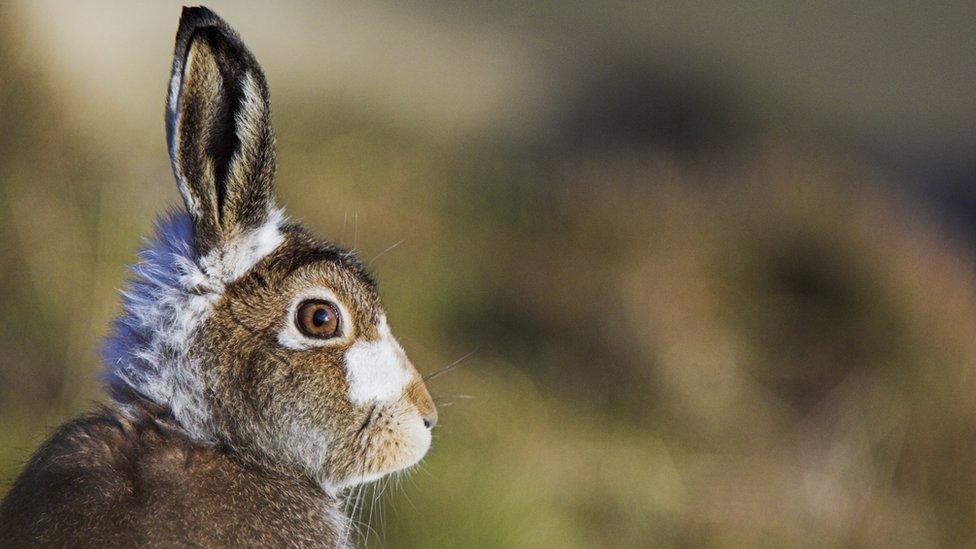Hare-culling footage 'not acceptable'
- Published
New footage shows large-scale hare-culling
First Minister Nicola Sturgeon has said large-scale culling of mountain hares on grouse moors is "not acceptable".
She made her comments at first minister's questions after a video of a mass cull was passed to the BBC.
Answering a question from Scottish Green MSP Alison Johnstone about the "sickening slaughter", Ms Sturgeon said she shared her anger.
The first minister said the Scottish government would explore all options to prevent mass culls of mountain hares.
One option would be legislation and a licensing scheme, she said.
The video, filmed without the knowledge of those involved, was passed to BBC Scotland's Investigation unit by animal rights charities.
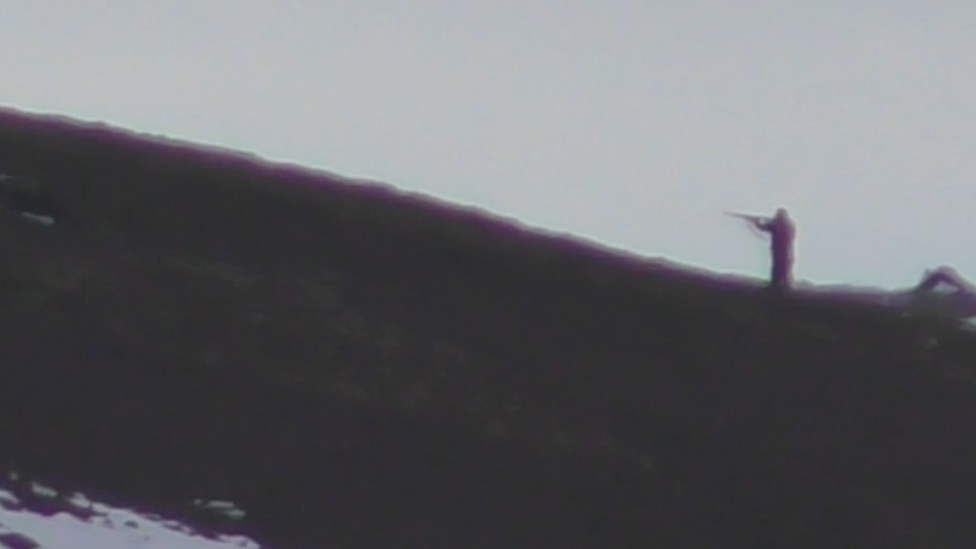
There are no restrictions on the numbers that can be killed during open season
It shows teams of gamekeepers using all-terrain vehicles to access remote hillsides and shoot hares last month.
Landowners can shoot the hares without a licence from August to February and claim culls are necessary to protect game, especially red grouse, from disease.
There are no restrictions imposed by government on how many mountain hares are killed during the open season.
But opponents have argued that the aim is to effectively wipe out hares on moors managed for grouse shooting.
At first minister's questions, Ms Johnstone said the "voluntary restraint" promised by landowners was sadly lacking and called for legal protection for the hares.
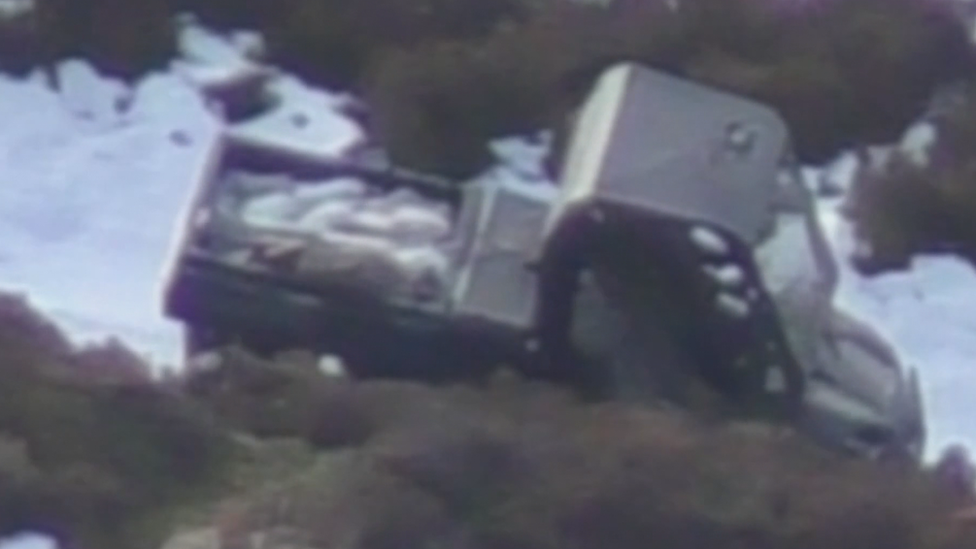
The video footage shows dozens of dead hares being transported in all-terrain vehicles
Ms Sturgeon agreed that the pictures in the video were "distressing".
She said: "I share Alison Johnstone's concern and anger.
"There is real public concern and we share the public concern about this iconic species on the Scottish mountains.
"Large-scale culling could put the conservation status at risk and that is clearly unacceptable."
Ms Sturgeon said there would be urgent talks with gamekeepers and stakeholder groups.
"What we are seeing is not acceptable," she said.
Gamekeepers' restraint
Tim Baynes, of Scottish Land and Estates, told the BBC he was "very concerned about the incorrect impressions given in the animal rights film about mountain hare management".
He said it was not mass culling but was instead "sustainable management of a cyclical population in just the same way the deer are managed".
He said there was no risk to the conservation status.
"Anyone with a serious interest in this valuable species will recognise the contribution of grouse moors in conserving it, while it faces serious decline outside grouse moor areas," he said.
In the video footage, passed to the BBC by OneKind and The League Against Cruel Sports, three short sequences show the killing of about 20 animals.
Footage filmed on the Corrybrough Estate shows a man on a quad bike shoot a hare.
The animal is wounded in the leg.
Activists say it ran around the moor, obviously injured, for several minutes before being killed by a dog.

The video of hare-culling was filmed on estates last month
Other videos from the Candacraig and Seafield Estates feature convoys of all-terrain vehicles and show dead hares being collected and carried off the hillside.
Harry Huyton, of OneKind, said: "Mountain hares are beautiful animals that are native to the Highlands and considered a conservation priority.
"Yet they are killed in enormous numbers on grouse moors across the country.
"We have long called for an end to the killing, and whilst the Scottish government are against large-scale culls and have asked shooting estates to practice voluntary restraint, they have refused to go further."
Red grouse
Mr Huyton said Environment Secretary Roseanna Cunningham had asked them to show her the evidence that large-scale culls were taking place "and that is exactly what we have done".
He said some estates were "at war with mountain hares" instead of practising restraint.
Robbie Marsland, of the League Against Cruel Sports said: "The sickening irony of the mayhem we saw on those mountainsides is that it is done in the hope that it will increase the number of red grouse to be shot for entertainment."
Mr Marsland said any animal that appears to threaten the red grouse is targeted by traps and snares or shot.
He said: "Threatened species like hen harriers are mysteriously absent from some moors.
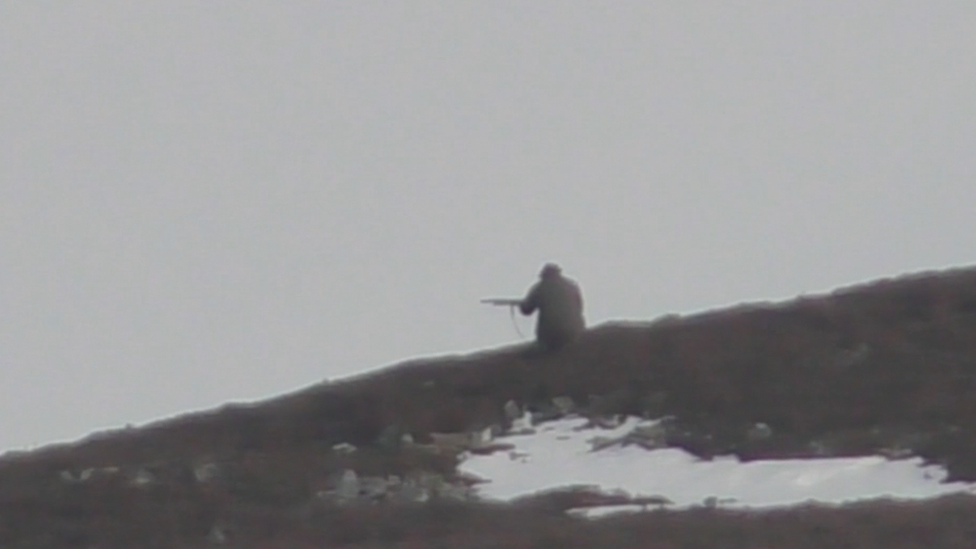
The estates said shooting mountain hares was legal
"Unplanned tracks and roads scar the hillsides, anti-worming chemicals are left unattended, lead shot pollutes the land and the heather is burned off on a landscape scale - all to ensure that one species will thrive.
"And then that species is shot for entertainment."
Mr Marsland called for a national debate on whether this was how we want large tracts of Scotland's land to be used.
Estates have argued that management for grouse has improved hare numbers on their land by reducing predator numbers and improving moorland habitats.
They also said that hares were responsible for spreading ticks and overgrazing, damaging regenerating trees.
BBC Scotland contacted all three estates in the video and umbrella body Scottish Land and Estates (SLE) responded on their behalf.
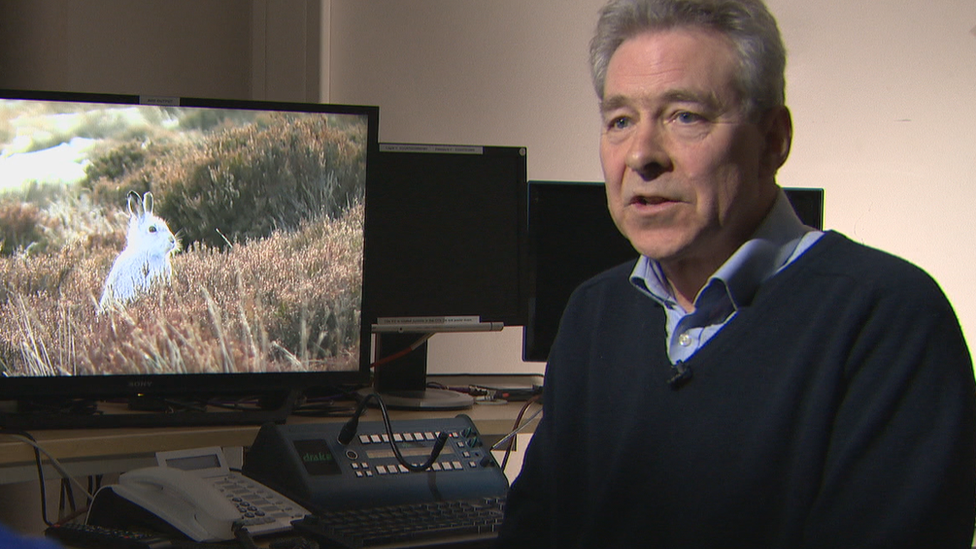
Tim Baynes of Scottish Land Estates said mountain hare management was necessary
A spokesman for The Scottish Gamekeepers Association said mountain hare overgrazing was damaging moorland.
He said: "If Scottish Natural Heritage and the Scottish government want protected sites to be in favourable condition then refuse to back the management actions to achieve that, then estates should stop being thrown to the mercy of animal rights campaigners with secret cameras and SNH should carry out the management themselves.
"We are not far from the stage now where people will not want to manage deer and hare populations because they cannot operate without being covertly filmed.
"Thousands of deer are killed annually, under government instruction and a potential £40 000 fine for non-compliance, to protect designated sites, habitats, crops and trees.
"Killing thousands of deer then leaving thousands of hares to feed on that same habitat defies any sense or logic."
The spokesman claimed the issue had become a Trojan horse for those seeking to end grouse shooting.
- Published31 July 2017
